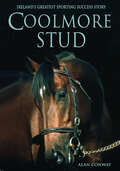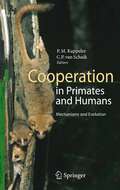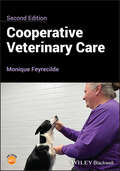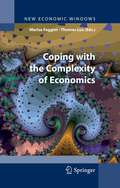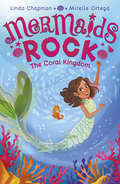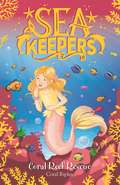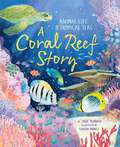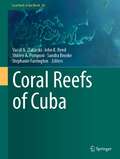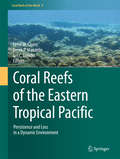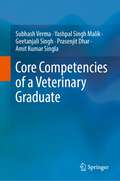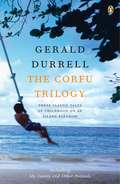- Table View
- List View
Coolmore Stud: Ireland's Greatest Sporting Success Story
by Alan ConwayNestled in a quiet part of County Tipperary, Coolmore Stud casts as long a shadow as any sporting entity over the history of Irish sport. Founded by the legendary horse trainer Vincent O’Brien, and now managed by John Magnier, Coolmore Stud has grown from a small breeding farm into a global behemoth, renowned the world over for the quality of the horses it produces. Alan Conway tells the story of how Coolmore Stud and its training operation at Ballydoyle have come to dominate the world of horse breeding and racing. Using the stories of the people involved, including the legendary Syndicate of Magnier, O’Brien and Robert Sangster, and of the famous horses it has produced, such as the legendary Sadler’s Wells, his sons Galileo and Montjeu, and the mighty Danehill, this book charts the rise of one of Ireland’s greatest sporting success stories.
Cooperation among Animals: An Evolutionary Perspective (Oxford Series in Ecology and Evolution)
by Lee Alan DugatkinDespite the depiction of nature "red in tooth and claw," cooperation is actually widespread in the animal kingdom. Various types of cooperative behaviors have been documented in everything from insects to primates, and in every imaginable ecological scenario. Yet why animals cooperate is still a hotly contested question in literature on evolution and animal behavior. This book examines the history surrounding the study of cooperation, and proceeds to examine the conceptual, theoretical and empirical work on this fascinating subject. Early on, it outlines the four different categories of cooperation -- reciprocal altruism, kinship, group-selected cooperation and byproduct mutualism -- and ties these categories together in a single framework called the Cooperator's Dilemma. Hundreds of studies on cooperation in insects, fish, birds and mammals are reviewed. Cooperation in this wide array of taxa includes, but is not limited to, cooperative hunting, anti-predator behavior, foraging, sexual coalitions, grooming, helpers-at-the nest, territoriality, 'policing' behavior and group thermoregulation. Each example outlined is tied back to the theoretical framework developed early on, whenever the data allows. Future experiments designed to further elucidate a particular type of cooperation are provided throughout the book.
Cooperation in Primates and Humans: Mechanisms and Evolution
by Peter Kappeler Carel P. Van SchaikThis book examines the many facets of cooperative behavior in primates and humans as some of the world’s leading experts review and summarize the state-of-the-art of theoretical and empirical studies of cooperation. This book is the first to bridge the gap between parallel research in primatology and studies of humans. Comparative as this approach is, it highlights both common principles and aspects of human uniqueness with respect to cooperative behavior.
Cooperative Veterinary Care
by Monique FeyrecildeCooperative Veterinary Care A new and improved edition of the original guide to veterinary care and husbandry putting the emotional welfare of animals first Every pet needs medical care in the veterinary clinic and husbandry at home. Fear and stress can present significant barriers to good care while also compromising safety for animal care professionals and pet owners. It’s possible to help pets learn to allow and even willingly participate in veterinary care, husbandry, and grooming. With a foundation in learning theory and emphasizing practical techniques, Cooperative Veterinary Care is a groundbreaking guide to encouraging voluntary participation in veterinary care. Now updated to reflect the latest research and clinical information drawing on years of professional hands-on experience, it’s a must-own for any small animal practice or pet professional looking to increase patient comfort and facilitate excellent care. Foundations of learning and training to prepare any professional to get started right away Unique exploration of the veterinary environment and how Cooperative Veterinary Care can help Integration of the Fear Free(sm) Spectrum of Fear, Anxiety & Stress to quantify patient experiences Step by step training plans for veterinary care and husbandry with photo and video demonstrations Practical applications for all common procedures. Foundation techniques which can be expanded to virtually any veterinary care or animal husbandry and grooming need Cooperative Veterinary Care is written for the veterinary professional team but will help anyone and everyone who cares for and interacts with pets.
Cooperative Veterinary Care
by Monique FeyrecildeCooperative Veterinary Care A new and improved edition of the original guide to veterinary care and husbandry putting the emotional welfare of animals first Every pet needs medical care in the veterinary clinic and husbandry at home. Fear and stress can present significant barriers to good care while also compromising safety for animal care professionals and pet owners. It’s possible to help pets learn to allow and even willingly participate in veterinary care, husbandry, and grooming. With a foundation in learning theory and emphasizing practical techniques, Cooperative Veterinary Care is a groundbreaking guide to encouraging voluntary participation in veterinary care. Now updated to reflect the latest research and clinical information drawing on years of professional hands-on experience, it’s a must-own for any small animal practice or pet professional looking to increase patient comfort and facilitate excellent care. Foundations of learning and training to prepare any professional to get started right away Unique exploration of the veterinary environment and how Cooperative Veterinary Care can help Integration of the Fear Free(sm) Spectrum of Fear, Anxiety & Stress to quantify patient experiences Step by step training plans for veterinary care and husbandry with photo and video demonstrations Practical applications for all common procedures. Foundation techniques which can be expanded to virtually any veterinary care or animal husbandry and grooming need Cooperative Veterinary Care is written for the veterinary professional team but will help anyone and everyone who cares for and interacts with pets.
Cooperative Veterinary Care
by Alicea Howell Monique FeyrecildeCooperative Veterinary Care puts the focus on preventing and reversing fear and stress in the veterinary setting through preparation, planning, and most importantly training. Offers evidence-based cooperative techniques to prevent fear and calm reactive patients, with concrete guidance for preventing, identifying, and reversing fear and stress in the veterinary setting Provides a unique system for identifying patients and selecting the right technique for each pet Supplies information on safe patient exams and interactions without the need for restraint Covers strategies to successfully implement these new techniques every day and boost client compliance Presents step-by-step detailed training protocols, including photographs and over 100 videos showing how to train patients quickly and effectively
Cooperative Veterinary Care
by Alicea Howell Monique FeyrecildeCooperative Veterinary Care puts the focus on preventing and reversing fear and stress in the veterinary setting through preparation, planning, and most importantly training. Offers evidence-based cooperative techniques to prevent fear and calm reactive patients, with concrete guidance for preventing, identifying, and reversing fear and stress in the veterinary setting Provides a unique system for identifying patients and selecting the right technique for each pet Supplies information on safe patient exams and interactions without the need for restraint Covers strategies to successfully implement these new techniques every day and boost client compliance Presents step-by-step detailed training protocols, including photographs and over 100 videos showing how to train patients quickly and effectively
Coordinated Activity in the Brain: Measurements and Relevance to Brain Function and Behavior (Springer Series in Computational Neuroscience #2)
by Richard Wennberg Jose Luis Perez VelazquezIncreasing interest in the study of coordinated activity of brain cell ensembles reflects the current conceptualization of brain information processing and cognition. It is thought that cognitive processes involve not only serial stages of sensory signal processing, but also massive parallel information processing circuitries, and therefore it is the coordinated activity of neuronal networks of brains that give rise to cognition and consciousness in general. While the concepts and techniques to measure synchronization are relatively well characterized and developed in the mathematics and physics community, the measurement of coordinated activity derived from brain signals is not a trivial task, and is currently a subject of debate. Coordinated Activity in the Brain: Measurements and Relevance to Brain Function and Behavior addresses conceptual and methodological limitations, as well as advantages, in the assessment of cellular coordinated activity from neurophysiological recordings. The book offers a broad overview of the field for investigators working in a variety of disciplines (neuroscience, biophysics, mathematics, physics, neurology, neurosurgery, psychology, biomedical engineering, computer science/computational biology), and introduces future trends for understanding brain activity and its relation to cognition and pathologies. This work will be valuable to professional investigators and clinicians, graduate and post-graduate students in related fields of neuroscience and biophysics, and to anyone interested in signal analysis techniques for studying brain function.
Coordination in Human and Primate Groups
by Margarete Boos, Michaela Kolbe, Peter M. Kappeler and Thomas EllwartCoordination in Human and Primate Groups presents one of the first collections of the different approaches and methods used to assess coordination processes in groups. Written by psychologists and primatologists, the book represents a broad range of coordination research fields such as social psychology, work and organizational psychology, medicine, primatology, and behavioural ecology. It is designed for researchers and practitioners interested in understanding the behavioural aspects of group coordination.
Copepoda: Proceedings of the Seventh International Conference on Copepoda, held in Curitiba, Brazil, 25–31 July 1999 (Developments in Hydrobiology #156)
by Rubens M. Lopes Janet W. Reid Carlos E. F. RochaProceedings of the Seventh International Conference on Copepoda, held in Curitiba, Brazil, 25-31 July 1999
Coping with the Complexity of Economics (New Economic Windows)
by Marisa Faggini Thomas LuxThroughout the history of economics, a variety of analytical tools have been borrowed from the so-called exact sciences. As Schoe?er (1955) puts it: “They have taken their mathematics and their ded- tive techniques from physics, their statistics from genetics and agr- omy, their systems of classi?cation from taxonomy and chemistry, their model-construction techniques from astronomy and mechanics, and their methods of analysis of the consequences of actions from en- neering”. The possibility of similarities of structure in mathematical models of economic and physical systems has been an important f- tor in the development of neoclassical theory. To treat the state of an economy as an equilibrium, analogous to the equilibrium of a mech- ical system has been a key concept in economics ever since it became a mathematically formalized science. Adopting a Newtonian paradigm neoclassical economics often is based on three fundamental concepts. Firstly, the representative agent who is a scale model of the whole society with extraordinary capacities, particularly concerning her - pability of information processing and computation. Of course, this is a problematic reduction as agents are both heterogeneous and bou- edly rational and limited in their cognitive capabilities. Secondly, it often con?ned itself to study systems in a state of equilibrium. But this concept is not adequate to describe and to support phenomena in perpetual motion.
Copper: A Dog's Life
by Lady Annabel GoldsmithA loveable local legend and true character to all who knew him, Copper was no ordinary dog. With more stories to tell than you could count on the pads of one paw, this curly-tailed, shaggy-bearded mongrel (but don't let him hear you call him that) led a truly astonishing life. Famed for his remarkable wanderlust, canine curiosity took him all over the place, from Richmond and Kingston to Brighton, sometimes travelling on buses with his friend Jessie the cat, often stopping off at his favourite pubs, or chasing unsuspecting joggers in the park - a hobby which nearly ended his life.In this delightful book, Copper tells us of his astounding adventures with the finest of tail-wagging wisdom. He sniffs out all the important things in life: the comings and goings, the loves and losses - and, of course, what it's like to live in high society.Sometimes cheeky, most of the time charming, but always cherished, Copper's story is by turns funny and moving, the tale of a real canine hero.
Copycat
by Colin Dann'Pinkie! Kittens! Run!' Sammy was the first ot hear the heavy thud of footsteps. He recognised the threat at once and called a warning. For a long time, life in the London park has been easy and peaceful for Sammy, Pinkie and their three kittens. But all that is about to change - there is a purge on the growing number of stray cats and dogs in the city. Sammy and Pinkie now face the urgent question of survival . . .
The Coral Kingdom (Mermaids Rock #1)
by Linda ChapmanWelcome to Mermaids Rock! The entrance to the mermaid realm in the deep, blue ocean… Marina is new in Mermaids Rock, having travelled the world with her scientist dad, and she can’t wait to make friends! She meets a group of mermaids who love animals and the environment as much as she does and the new friends soon face their first challenge… The beautiful coral caves nearby have been damaged. Who, or what, could have caused the destruction? And why? From the author of STAR FRIENDS comes the first in an exciting new series about the wonders of the ocean, perfect for fans of RAINBOW MAGIC, Barbie Dolphin Magic and Holly Webb.
Coral Reef Conservation and Restoration in the Omics Age (Coral Reefs of the World #15)
by Madeleine J. H. van Oppen Manuel Aranda LastraThe rapid demise of coral reefs worldwide has spurred efforts to develop innovative conservation and restoration methods. Many of these rely on omics approaches to produce genetic, genomic, transcriptomic, epigenomic or metabolomic data to inform conservation and restoration interventions. This book provides the state of play of this field. It discusses topics ranging from how genomic and environmental DNA (eDNA) data can be used to inform marine protected area design and cryopreservation strategies, the use of knowledge on adaptive genetic and epigenetic variation to maximise environmental stress tolerance of coral stock, harnessing transcriptome data to develop early warning markers, the use of microbial symbiont omics data in guiding restoration strategies, to applications of metabolomics and genetic engineering. How best to translate omics data to resource managers is also discussed.
Coral Reef Rescue: Book 3 (Sea Keepers)
by Coral RipleyThe show must go on! The Sea Keepers head Down Under for a tropical talent show in this magical new series about saving our oceans.The Sea Keepers are off to Australia to help the Oceania mermaids! Divers are threatening their beautiful coral reef and evil siren Effluvia has enchanted a dangerous shark to spoil the mermaids' tropical talent show. Now all the fish who live there are in danger! Can Emily, Grace and Layla find a magical pearl to save the show and protect the reef without becoming a shark's snack?
A Coral Reef Story: Animal Life in Tropical Seas (An Arctic Story series)
by Jane BurnardThis is a coral reef. A living, limestone necklace beneath the sea, built over thousands of years by billions of tiny creatures.Discover incredible facts about the wide variety of creatures that live in and around the coral reef. Travelling through the seasons, we meet great white sharks, bright greenthroat parrotfish, graceful green turtles and more amazing animals as they hunt for food and play. See the stripy clown fish fiercely guarding his babies, and the eel spitting out a spiky porcupinefish. Beautiful descriptions of unique sea life are further animated by colourful illustrations that will leave children and adults poring over the pages of this book.With lyrical text by Jane Burnard combining with Kendra Binney's evocative illustrations to show readers the magical beauty of the coral reef, this is a story sure to inspire wonder in the natural world.
Coral Reefs: A Natural History
by Charles SheppardAn illustrated look at corals and the reefs they build around the world, and the causes and dire consequences of their rapid disappearanceCorals are among the most varied lifeforms on Earth, ranging from mushroom corals and leather corals to button polyps, sea fans, anemones, and pulse corals. Bridging the gap between plant and animal, these marine invertebrates serve as homes to reef fish and share symbiotic relationships with photosynthesizing algae, which provide corals with their nourishment. This stunningly illustrated book profiles the astonishing diversity of the world's coral groups, describing key aspects of their natural history and explaining why coral reefs are critical to the health of our oceans. Representative examples of corals have been selected to illustrate the broad range of species, and the book's lively and informative commentary covers everything from identification to conservation, making it an essential resource for marine biologists, divers, and anyone who is fascinated by these remarkable sea creatures.Features more than 200 exquisite color photosHighlights key aspects of corals and their natural historyFeatures representative examples from around the worldIncludes photos of rare and unusual species
Coral Reefs: A Natural History
by Charles SheppardAn illustrated look at corals and the reefs they build around the world, and the causes and dire consequences of their rapid disappearanceCorals are among the most varied lifeforms on Earth, ranging from mushroom corals and leather corals to button polyps, sea fans, anemones, and pulse corals. Bridging the gap between plant and animal, these marine invertebrates serve as homes to reef fish and share symbiotic relationships with photosynthesizing algae, which provide corals with their nourishment. This stunningly illustrated book profiles the astonishing diversity of the world's coral groups, describing key aspects of their natural history and explaining why coral reefs are critical to the health of our oceans. Representative examples of corals have been selected to illustrate the broad range of species, and the book's lively and informative commentary covers everything from identification to conservation, making it an essential resource for marine biologists, divers, and anyone who is fascinated by these remarkable sea creatures.Features more than 200 exquisite color photosHighlights key aspects of corals and their natural historyFeatures representative examples from around the worldIncludes photos of rare and unusual species
Coral Reefs of Cuba (Coral Reefs of the World #18)
by Vassil N. Zlatarski John K. Reed Shirley A. Pomponi Sandra Brooke Stephanie FarringtonThis comprehensive volume gathers foremost experts on the coral reefs of Cuba who represent a spectrum of disciplines, including biology, conservation ecology, economics and geology. The volume is organized along general themes including the Cuban Reef biota, reefs occurring in the Mesophotic and Eutrophic zones, ecology, conservation, management and the economic importance of the coral reefs of Cuba. The combination of case studies, new and previously published research, historical overview and examples of the ways in which research has contributed to the management and conservation of Cuban coastal resources provides a unique reference for graduate students and professionals holding a wide range of interests and expertise related to coral reef systems.
Coral Reefs of Eastern Asia under Anthropogenic Impacts (Coral Reefs of the World #17)
by Ichiro Takeuchi Hideyuki YamashiroCoral reefs, which are one of the most productive and biodiverse ecosystems on Earth, serve various important roles, such as providing shelter and spawning grounds to a wide range of marine animals. However, the global decline of hard corals in tropical and subtropical regions is a growing concern. A recent review of the Intergovernmental Panel on Climate Change (IPCC) indicated that only 10%–30% of coral reefs would survive with an increase of 1.5 °C in global warming temperature. Of coral reefs around the world, the coral reefs in eastern Asia face one of the most industrially developed and high population areas in the world. Thus, coral reefs of eastern Asia have been affected by various anthropogenic factors, such as eutrophication, coastal development, anthropogenic pollutants, ocean acidification, disease, and overfishing. Therefore, urgent research is required to determine the levels at which different factors will affect coral health. Besides, we propose a perspective on coral reef (especially those in eastern Asia) conservation under climate change and various anthropogenic activities.
Coral Reefs of the Eastern Tropical Pacific: Persistence and Loss in a Dynamic Environment (Coral Reefs of the World #8)
by Peter W. Glynn Derek P. Manzello Ian C. EnochsThis book documents and examines the state of health of coral reefs in the eastern tropical Pacific region. It touches on the occurrence of coral reefs in the waters of surrounding countries, and it explores their biogeography, biodiversity and condition relative to the El Niño southern oscillation and human impacts. Additionally contained within is a field that presents information on many of the species presented in the preceding chapters.
Core Competencies of a Veterinary Graduate
by Subhash Verma Yashpal Singh Malik Geetanjali Singh Prasenjit Dhar Amit Kumar SinglaThis book is an essential guide for veterinarians, veterinary faculty and policymakers for understanding the core competencies of a fresh veterinarian. The book briefly covers competencies in preclinical, paraclinical, and clinical subjects including anatomy, physiology, biochemistry, veterinary jurisprudence, animal management & welfare including nutrition and breeding, infectious and non-infectious diseases, disease epidemiology, diagnosis, and treatment, prevention, control and zoonoses, surgical and other clinical interventions. The book further includes other competencies, including biologicals, anti-mortem, and post-mortem inspection, certifications, applied one health aspects, review and analysis of scientific evidence, international trade and regulations, and organization of veterinary services. It also highlights the importance of effective communication, interpersonal skills, record keeping and management of a small veterinary hospital, health informatics, etc. The book breakdowns the must-have competencies of a global veterinarian into different topics and subtopics for easy comprehension and further learning. It enables the professional standard-setting & regulatory bodies and academicians in improved curricula designing and implementation and more importantly tries to bring uniformity in day one veterinary graduates’ competencies globally, enhancing the movement and employability of veterinarians across the world.
The Corfu Trilogy: Three Classic Tales Of Childhood On An Island Paradise (The\corfu Trilogy Ser. #3)
by Gerald DurrellThe trilogy that inspired ITV's six part television series The Durrells.Three classic tales of childhood on an island paradise - My Family and Other Animals, Birds, Beasts and Relatives and The Garden of the Gods by Gerald Durrell - are available in a single edition for the first time in The Corfu Trilogy.Just before the Second World War the Durrell family decamped to the glorious, sun-soaked island of Corfu where the youngest of the four children, ten-year-old Gerald, discovered his passion for animals: toads and tortoises, bats and butterflies, scorpions and octopuses. Through glorious silver-green olive groves and across brilliant-white beaches Gerry pursued his obsession . . . causing hilarity and mayhem in his ever-tolerant family.Durrell's memories of those enchanted days gave rise to these three classic tales, loved by generations of adults and children alike, which are now available in one volume for the first time.'He has an uncanny knack of discovering human as well as animal eccentrics' Sunday Telegraph'A delightful book full of simple, well-known things: cicadas in the olive groves, lamp fishing at night, the complexities of fish and animals - but, above all, childhood moulded by these things' New York Times
Cornerstones: Wild forces that can change our world
by Benedict MacdonaldBY THE WAINWRIGHT-CONSERVATION-PRIZE-WINNING AUTHOR OF REBIRDING Transform your understanding of the natural world forever and discover the wild forces that once supported Britain's extraordinary natural riches, and could again.Our precious archipelago is ravaged by climate change, bereft of natural ecosystems and lies at the mercy of global warming, flooding, drought and catastrophic biodiversity loss. But could restoring species that once helped protect our islands help turn this crisis around?From familiar yet imperilled honeybees and ancient oak woods to returning natives like beavers and boars, Britain's cornerstone species may hold the key to recovering our biodiversity on land and in our seas. In Cornerstones, we discover how beavers craft wetlands, save fish, encourage otters, and prevent rivers from flooding. We learn how 'disruptive' boars are seasoned butterfly conservationists, why whales are crucial for restoring seabird cities and how wolves and lynx could save our trees, help sequester carbon and protect our most threatened birds.Benedict Macdonald transforms our understanding of the natural world forever, revealing lives that once supported extraordinary natural riches and explaining how humans – the most important cornerstone species of all – can become the greatest stewards of the natural world.
